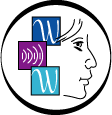
Pediatric Services

Early Intervention (Birth-3)
Early intervention is a team-based service for infants and toddlers from birth to age 3, who are at risk for conditions that may affect typical development and learning. Parents and caregivers are an essential part of the team. They work closely with their Speech-language pathologist to learn the most effective ways to support their child in the home and daycare.
We specialize in this service and provide screenings and consultative therapy services for caregivers on telehealth and in-person.

Articulation/Phonology
Articulation and phonology therapy targets speech-sound production and sound patterns and rules. Therapists work with children on age-appropriate sounds based on developmental norms after assessing which sounds the child substitutes or leaves out of words. The speech pathologist models tongue and lip placement and monitors the oral structure, movements, and respiration.

Childhood Apraxia of Speech
Childhood apraxia of speech is a neurological speech sound disorder that impacts precision and consistency of movements used for making speech sounds. A child will demonstrate difficulty with coordination and speech sound production consistency. When you have apraxia of speech, the messages do not get through to the articulators (tongue lips) correctly. You might not be able to move your lips or tongue on command to imitate sounds. Sometimes, you might not be able to speak at all. Children with CAS often require several weekly sessions.

Language Delay & Disorder
A language delay occurs when a child's language skills are acquired in a typical sequence, but lag behind peers their own age. A language disorder is characterized by atypical language acquisition significantly disrupting communication across settings.
A language disorder represents a persistent difficulty in the acquisition and use of listening and speaking skills across any of the five language domains: phonology, morphology, syntax, semantics, and pragmatics. Language disorders may persist across the life span, and symptoms may change over time.

Fluency/Stuttering
People who stutter may have different types of disfluencies. They may repeat parts of words (repetitions), stretch a sound out for a long time (prolongations), or have a hard time getting a word out (blocks). Stuttering is more than just disfluencies. Stuttering also may include tension and negative feelings about talking. It may get in the way of how you talk to others. You may want to hide your stuttering or avoid certain words or situations. Speech pathologists determine if a stutter is related to typical language development or a true fluency issue, and work with clients to help reduce the disfluencies or blocks and work toward smoother speech.

Pragmatic Disorders
Children with a pragmatic disorder may demonstrate a general language delay. They may have trouble understanding the underlying meaning of what others are saying. They may also have difficulty using language appropriately to get their needs met and to interact with others.
Children may demonstrate difficulty with reading non-verbal cues, body language, topic maintenance, conversation turn-taking, and more. It is common for those on the autism spectrum to have difficulty with social skills. Speech pathologists assist with explaining and teaching how to better communicate and read the cues of others, stay on topic, practice turn-taking, and more.

I am here to answer questions and guide you on your communication journey!
Schedule a FREE 20 minute telephone consultation today!



